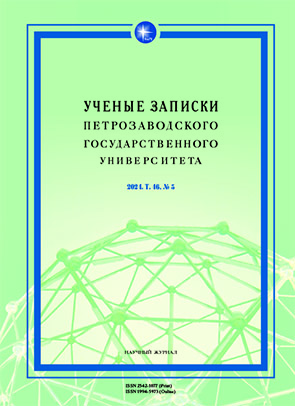ЦЕРКОВНОСЛАВЯНСКИЙ VS РУТЕНСКИЙ: О ЯЗЫКЕ ВИЛЕНСКОЙ ПСАЛТЫРИ
CHURCH SLAVONIC VS RUTHENIAN: THE LANGUAGE OF THE VILNA PSALTER
Author(s): Alexandra Evgenievna SobolevaSubject(s): Christian Theology and Religion, Language studies, Language and Literature Studies, Eastern Slavic Languages, Philology
Published by: Петрозаводский государственный университет
Keywords: Psalter; Ruthenian language; translations; Francisk Skorina; Old Church Slavonic language;
Summary/Abstract: The manuscript from the collection of the Vilnius Library of the Lithuanian Academy of Sciences (F 19– 262), whose Old Testament books have been translated into the Western Russian (Ruthenian) written language, was created around 1517–1530. It was initially thought that all of its books were translated from Hebrew. However, M. Taube masterfully shows that the sources of the Psalter texts were the Church Slavonic Psalter and the Latin Bible. The text of the Psalter is heterogeneous: the predominance of the features of the Western Russian language in its second half has been noted by researchers before. However, there has been no detailed linguistic study revealing the regularities of translation of the text of all psalms, which determines the novelty of the study. The objectives of this work are to identify and describe the correlations between the Church Slavonic and Western Russian languages in the psalms of the Vilna corpus, as well as the translation techniques. The first 16 psalms practically do not reveal any signs of the Ruthenian language, the grammatical and phonetic features of which are represented by inclusions. From Psalm 17 to Psalm 71 the changes accumulate quantitatively, with their number increasing by the middle of the Psalter, creating an impression of chaotic linguistic organization of the text. Lexical revision takes place in two directions: certain Church Slavicisms are replaced, and there is a move towards the unified translation of Latin words. The revision is carried out with varying degrees of consistency, but almost all of the lexemes proposed by the translator are repeated in the next part of the Psalter, often replacing the same Latin words. From Psalm 72 onwards, we see the Church Slavonic basis of the text only peek through the Western Russian features. This transformation affects all levels of language. Only one use of the form byhmo in the subjunctive mood is recorded, and since this form was actively spreading in the late XVI century, it seems unlikely that this translation of the Psalter dates back to the period before the first third of the XVI century, i.e. the manuscript and its translation belong to the same time period, and there is a possibility that the translation was specifically tailored for this manuscript. Furthermore, the research findings suggest that the translation was completed by one person, while the linguistic heterogeneity of different parts of the Psalter can be attributed to the search for consistent translation principles.
Journal: Ученые записки Петрозаводского государственного университета
- Issue Year: 46/2024
- Issue No: 5
- Page Range: 44-54
- Page Count: 11
- Language: Russian

